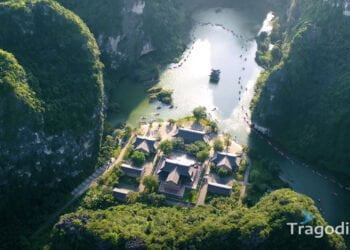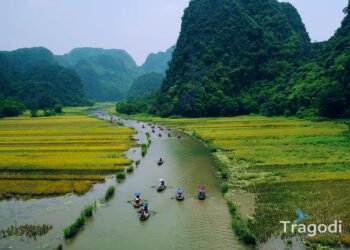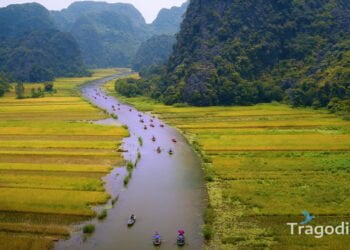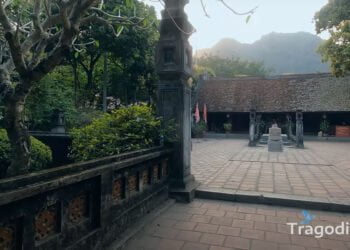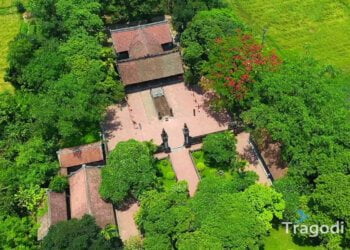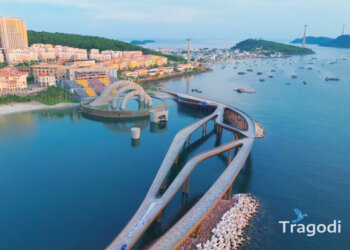1. Trang An Ecotourism Complex
This is a cultural and natural heritage site recognized by UNESCO in 2014. Trang An covers an area of over 2,000 hectares, including numerous caves, lakes, mountain islands, temples, and ancient relics. You can participate in a boat tour on the river to explore the mystical beauty of Trang An, such as Sang Cave, Toi Cave, Nau Ruou Cave, Dai Cave, Dia Linh Cave, Bai Dinh Cave, Sinh Cave, Si Cave… Each cave has its own unique beauty, with strange limestone formations and water droplets reflecting light, creating unique color effects.

2. Tam Coc – Bich Dong Tourist Area
This is one of the most famous tourist spots in Ninh Binh, known as the “second inland Ha Long”.
Tam Coc means three caves, which are the names of three caves located on the Ngo Dong River, namely Ca Cave, Hai Cave, and Ba Cave. You can take a boat on the river to admire the vast rice fields, towering limestone mountains, winding caves, and abundant species of birds, fish, and plants. Tam Coc has a unique beauty during the ripe rice season, when the golden rice fields create a dreamlike picture.
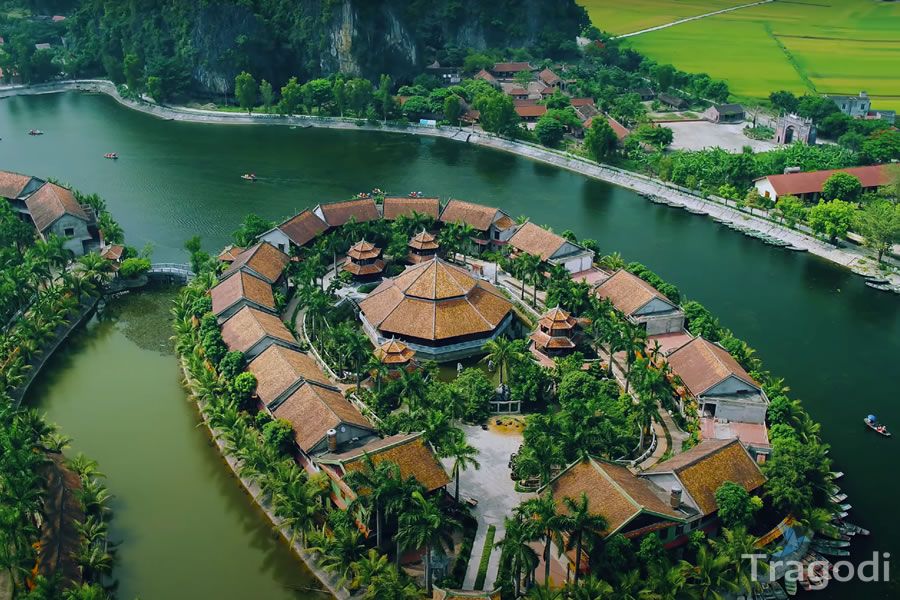
Bich Dong is a complex of temples located on a limestone mountain, consisting of three levels: Ha Temple, Trung Temple, and Thuong Temple. You can climb the stone steps to visit the temples, admire the Buddha statues, embroidered paintings, ancient poems, and view the panoramic view of Tam Coc from above.
3. Mua Cave
This is a newly popular tourist spot in Ninh Binh, attracting many visitors with its pristine and majestic beauty. Mua Cave is located at the foot of Ngoa Long Mountain, with a path leading to the mountain peak with over 400 stone steps.

You can overcome the challenge to reach the mountain peak, where there is a small temple and a 10-meter high statue of Guanyin. From here, you can admire the panoramic view of Tam Coc, Trang An, the ancient capital of Hoa Lu, and the lush green rice fields. Mua Cave also has a small cave, which is said to be where King Tran often came to listen to court musicians perform dances and songs.
4. Hoa Lu Ancient Capital
This was once the capital of Dai Co Viet during the reigns of King Dinh Tien Hoang, Le Dai Hanh, and Ly Thai To, from the end of the 10th century to the beginning of the 11th century. Hoa Lu Ancient Capital covers an area of about 300 hectares, including many important architectural and cultural relics, such as temples dedicated to the two kings Dinh Tien Hoang and Le Dai Hanh, the temple of King Ly Thai To, Ngoa Long Temple, Cao Son Temple, Thai Binh Temple, Ma Yen Temple… You can visit these relics to learn about the history, culture, and architecture of our country in ancient times, as well as admire high-artistic-value sculptures, reliefs, and stone steles.

5. Van Long Nature Reserve
This is the largest wetland area in Ninh Binh province, with an area of over 3,000 hectares, including many lakes, swamps, Melaleuca forests, mountain islands… Van Long is considered the “third Inland Ha Long Bay” because it has many beautiful landscapes like paintings, with green limestone mountains, winding rivers, vast rice fields…

You can take a boat on the river to admire these beautiful scenes, as well as visit caves such as Fish Cave, Bong Cave, Turtle Cave… Van Long is also home to many rare animals, such as langurs, owls, squirrels, snakes, storks, herons… You can observe and learn about these animals, as well as participate in environmental protection and biodiversity activities. Van Long is a tourist spot that brings you experiences of wild and peaceful nature.
6. Bai Dinh Temple
This is the largest Buddhist temple complex in Vietnam, covering an area of over 500 hectares, including both the ancient and new temples. Bai Dinh Temple is famous for many records, such as having the largest bronze Buddha statue in Southeast Asia, the largest bell in Vietnam, the corridor with the most Buddha statues in the world, the largest jade Guanyin statue in Vietnam…

You can visit the unique and magnificent architectural works of the temple, such as Tam Quan, Dai Hung Bao, Bao Thap, Cung Quang Minh, Cung Tam The… as well as worship the Buddha statues, Guanyin statues, Arhat statues… with high spiritual and artistic value. Bai Dinh Temple also hosts many traditional festivals, such as the inauguration ceremony, the peace prayer ceremony, the requiem ceremony… attracting millions of tourists and Buddhists to participate every year. Bai Dinh Temple is a tourist spot that embodies the culture and beliefs of the Vietnamese people.
7. Thung Nham Ecotourism Area
This is an ecological tourist area located in the Van Long Nature Reserve, covering an area of over 300 hectares, including many caves, flooded forests, fruit gardens, bird breeding areas… You can participate in many interesting and useful activities in Thung Nham, such as boating on the river, exploring caves such as Chua Cave, Vai Cave, But Cave, Thien Ha Cave… enjoying fresh and delicious fruits such as oranges, grapefruits, plums, jackfruits… or watching flocks of birds returning to their nests at sunset.
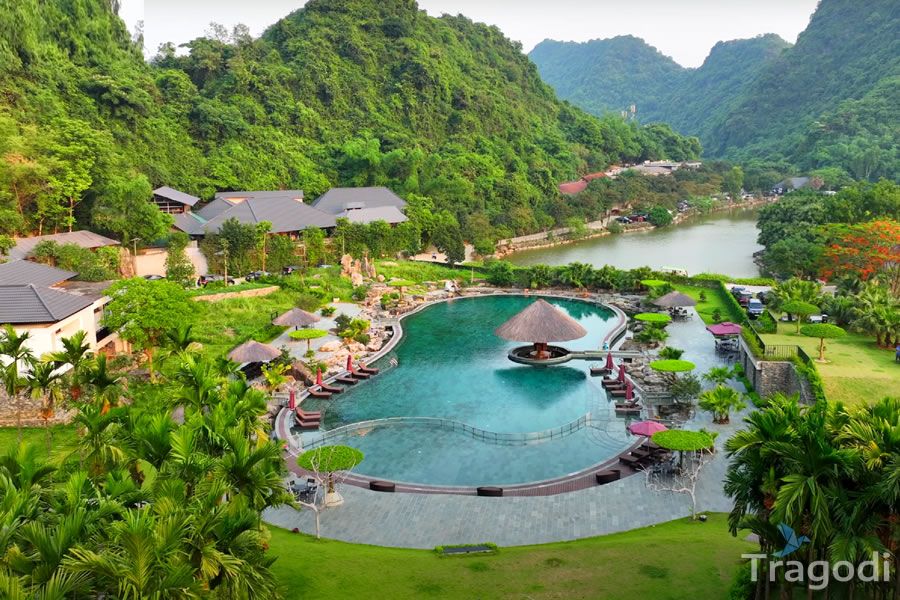
Thung Nham also has many diverse resort and culinary services, such as stilt houses, wooden houses, leaf houses, restaurants, eateries… so you can enjoy a comfortable holiday and be friendly with nature. Thung Nham is an ideal tourist spot for those who love to explore and be close to nature.
8. Phat Diem District
This is a town located in Kim Son district, with a history of over 300 years, where there are many unique and beautiful religious architectural works. Phat Diem is known for Phat Diem Church, a masterpiece of architectural art, built from 1875 to 1899, by Father Truong Buu Diep. Phat Diem Church has a style that combines Western and Eastern architecture, with tiled roofs, stone pillars, patterns, carvings… imbued with Vietnamese culture.
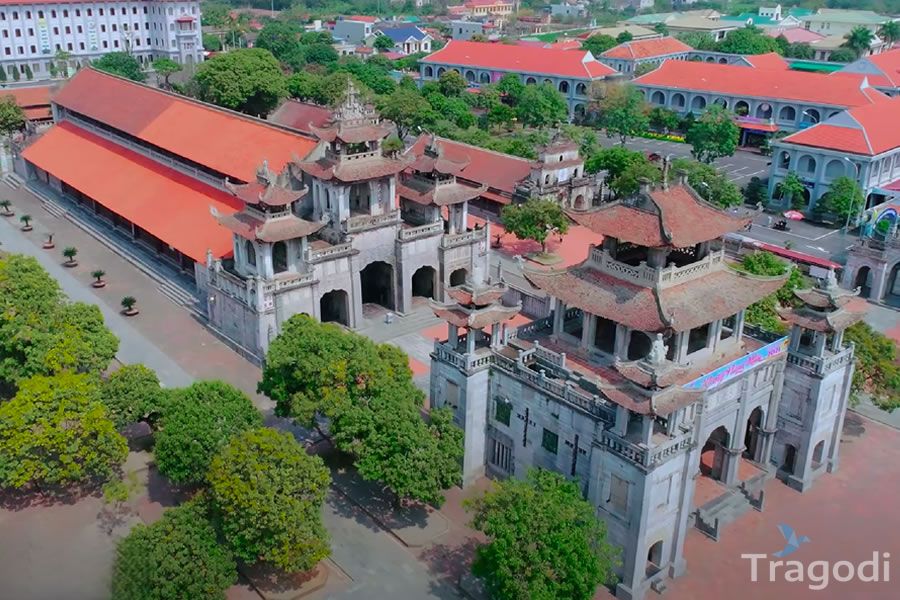
You can visit the church’s works, such as the chapel, the main house, the stone church, the bell tower, the district church… as well as admire the paintings, statues, reliefs… with high artistic value. Phat Diem also has many temples, pagodas, craft villages and special cuisine, such as Thai Binh Temple, Linh Phong Pagoda, silk weaving village, boat building village, sticky rice cake, day cake, gai cake… Phat Diem is a tourist spot that brings you experiences about culture, religion and the life of the local people.
9. Cuc Phuong Nature Reserve
This is one of the largest and first nature reserves in Vietnam, established in 1962, with an area of over 22,000 hectares, located at the border of three provinces Ninh Binh, Thanh Hoa and Hoa Binh. Cuc Phuong has diverse terrain, with many mountains, hills, valleys, streams, caves… You can participate in many ecological tours and explorations in Cuc Phuong, such as walking in the forest, mountain climbing, cycling, camping, sleeping in the forest…

You can also visit the highlights of Cuc Phuong, such as the Wildlife Rescue Center, Orchid Garden, Cuc Phuong Museum, Ancient Human Cave, Da Dung Cave, Heaven Gate, Small Heaven Gate… Cuc Phuong is also home to many rare animals and plants, such as langurs, monkeys, bears, turtles, birds, flowers, trees… You can observe and learn about these creatures, as well as participate in environmental protection and biodiversity activities. Cuc Phuong is an attractive tourist spot for those who love adventure and risk, as well as want to have knowledge about nature and animals.
10. Kenh Ga Ecotourism Area
This is a tourist area located on the Hoang Long River, covering an area of over 80 hectares, including many canals, sand islands, grasslands, Melaleuca forests… Kenh Ga is named so because many people here raise chickens, and there is a water channel shaped like a chicken.

You can take a boat on the river to enjoy these beautiful scenes, as well as visit fishing villages, craft villages, floating markets… Kenh Ga also has many attractive resort and culinary services, such as stilt houses, wooden houses, leaf houses, restaurants, eateries… You can enjoy a relaxing holiday and be friendly with the local people. Kenh Ga is a tourist spot that brings you experiences about river life and the culture of this land.

